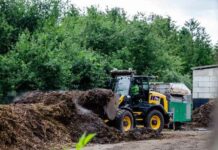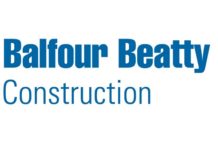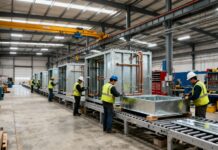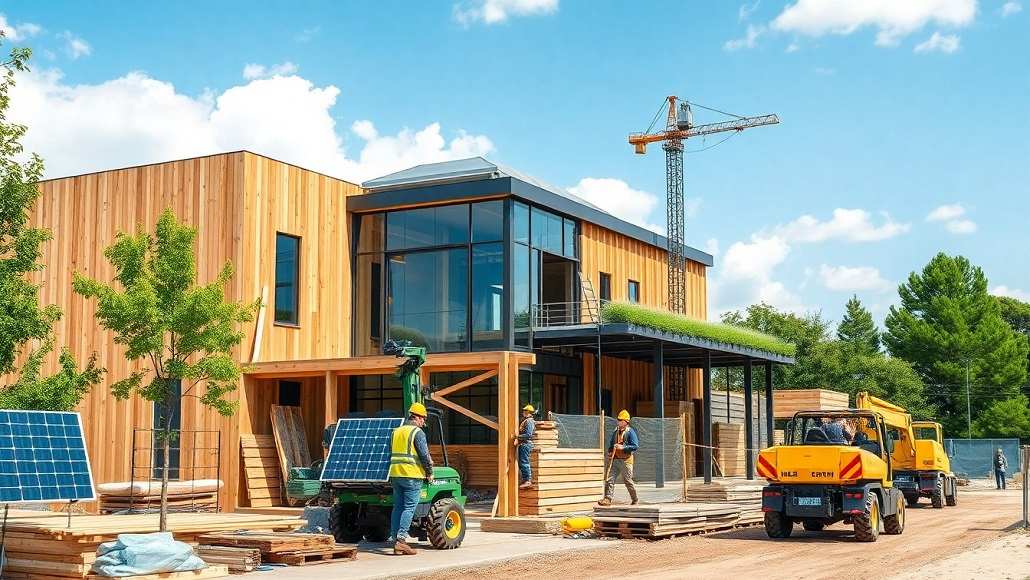The global construction landscape is experiencing a profound shift driven by a collective push toward sustainability, energy efficiency, and environmentally responsible development. At the centre of this revolution is the fast-growing green building materials market is becoming ever more vital to developers, policymakers, and consumers dedicated to minimising carbon footprints and promoting sustainable urbanisation.
At a projected compound annual growth rate (CAGR) of around 8.7% between 2025 and 2033, the market is anticipated to increase from its 2024 valuation of approximately USD 337.2 billion to 370.1 billion in 2025, which may potentially surpass to a valuation of USD 734.6 billion by 2033. Both technology advancements and a shifting legislative framework that supports environmentally friendly materials across industries and regions are to blame for this rise.
The forces of the market are complicated and multi-faceted, covering many product categories, applications, and regional impacts. The interactions of the various parameters are creating trends that will inform the future of green building and retrofit jobs throughout the globe.
Market Context and Growth Drivers
The increased demand for climate action and adherence to stringent regulations has initiated a transition to green building. Governments across the globe, particularly in North America and Europe, have enacted stringent policies that encourage green construction, such as incentives for the use of renewable materials, energy-efficient design codes, and zero-emission building regulations. Such policies support the uptake of green building materials, either in new buildings or retrofitting purposes.
In North America, there has been an increase in investment into sophisticated water management, insulation, and building automation in North America that has been driven in part by the pursuit of LEED certification and the demand for net-zero buildings. In the same manner, architects and builders enjoy greater access to more items than in the past, largely because of advances in technology (e.g., recyclable steel, biodegradable insulation, high-performance glass). The development of supply chains to include sustainable sourcing has also helped to drive the market’s positive direction.
The Asia-Pacific is driven by urbanisation and infrastructure growth in China, India, and Australia, and will experience the greatest growth. The regional shift towards green standards and affordability has encouraged investments in domestic manufacturing of green materials, with prominent investments in recycled concrete, bamboo, and water-saving fixtures. Europe remains ahead of policy-driven take-up, setting sustainability standards that spread to global standards.
Market Segmentation and Product Types
Product-type market segmentation reflects the variety of materials and systems propelling sustainable construction. Exterior products, such as green roofing and cladding solutions, are in high demand with their applications in energy efficiency and climate resilience. High-insulation roofing materials are reducing heating and cooling loads often made from recycled materials. Many urban areas are adopting solar-reflective roofing systems to support cities in their climate objectives.
Another essential facet of the sustainability story is interior products. With biodegradable insulation, toxic-free flooring, and low-emission paints, indoor air quality is improved by removing volatile organic compounds. Additionally, eco-conscious consumers are interested in acoustic insulation made of natural fibres and recycled materials.
Structural products, one of the market’s key segments, are evolving to meet consumer demand for sustainable, lightweight alternatives to traditional steel and concrete using engineered wood, bamboo, and recycled steel. Building systems like energy management, lighting, and HVAC controls are becoming smarter, integrated systems that maximise energy efficiency.
Water management systems are moving to the forefront for regions vulnerable to drought. High-performance green buildings include greywater recycling, rainwater harvesting, and water-efficient fixtures with a focus on resource conservation.
Application and End-Use Dynamics
The market environment reflects significant diversification. The residential market, fueled by growing consumer consciousness and government support, holds a commanding market share. Smart homes with green materials, energy-efficient windows, and low-flow fixtures become more popular among green-building homeowners. In developed countries like North America and Europe, the market for net-zero homes—also known as “zero-energy” or “passive houses”—continues to grow.
To obtain certifications like LEED and BREEAM (Building Research Establishment Environmental Assessment Method), commercial buildings like offices, retail establishments, and hotels are adopting green products. Investments in green building systems and interior items are also being driven by corporate social responsibility initiatives and the emphasis on employee well-being.
By implementing sustainable infrastructure, the institutional and industrial sectors—hospitals, schools, government buildings, and factories—are also improving their environmental credentials. To meet strict environmental standards, these industries frequently use materials with superior thermal performance and water management systems.
A big change in the end-use segmentation of the market, is towards retrofit projects. This is because retrofitting with sustainable materials provides an efficient way to save energy and follow environmental rules, considering older existing buildings and the climbing energy prices.
Regional Outlook

The combination of progressive policy and technology along with consumer awareness continues to promote market growth. Demand for intelligent building systems, water conserving fixtures, and next-generation insulation is especially high in the US, which is driven by the adoption of stricter energy codes and encouragement of net-zero construction certificates.
With the European Green Deal and broader climate goals emphasising cleaner building methods, Europe too has a significant role to play. Germany, France, and the Nordic countries are leading the way to adopt green materials in government and private projects.
In the Asia-Pacific, market growth is being driven by rapid urbanisation and infrastructure development. Local production of green materials is being encouraged by governments, thereby lowering costs and enhancing supply chain robustness. China continues to be the strong leader through the significant green building activities in urban areas, particularly Beijing and Shanghai.
The Middle East and Africa, include Latin America, are all developing regions. Markets are being forced into more water efficient infrastructure; climate impacts, water shortages and increasing regulations are pushing these markets to sustainable structural materials and innovative water management. The Middle East’s emphasis on futuristic water management, with a climate-resilient, high-growth trajectory is prime for future industry growth.
Future Trends and Market Projections
In the near term green building materials will experience a rapid increase in growth, the estimates reaching above USD 734.6 billion by 2033. Look at the compound annual growth rate (CAGR) of approaching 8.7%, this indicates that the industry is showing a strong trend of growth driven by technology, digitalisation, and sustainability standards. There will also be a large investment in development of long-life performance materials such as nanomaterials and bio-based composites that will improve thermal performance, acoustic performance and structural performance. In addition, smart building systems will include IoT and sensors for real-time monitoring of energy use, water use, and other enhanced performance features to enhance resource use efficiency.
Supply chains will need to be more local as they will emphasise sustainability and a circular economy as they reduce the long-haul logistics that increase the carbon footprint. In this time, digital twins and AI-enabled analytics will be critical to green building design, management, and maintenance, to facilitate efficiency and cost reductions.
Conclusion
The size, share, and trends analysis of the green building materials market in 2025-2033 presents an encouraging vision of a fast-developing industry at the center of innovation, regulation, and consumer-driven needs. North America continues to be a pioneer on the back of robust policies and technological advancement, while APAC’s growing urbanisation can be the fastest-growing market driving the global growth.
The use of sustainable materials, such as recycled steel, bio-based composites, and water-restricted systems, will be necessary for developers who want to achieve certification and a slight edge over competitors. Digital platforms such as IoT and AI will create smarter, more sustainable buildings that are more efficient (cost, materials, and environmental) with the advancement of technology.
The role of manufacturers, lawmakers, and end-users will be equally essential to advance the discussion around future industry definitions and finding ways to enhance circularity in the industry. The market for green materials will continue to be a key contributor to the global sustainability practice with stricter targets for climate along, with the urgent need for resilient infrastructure. The impacts of green building materials will continue to be felt across all aspects of building and renovations in the world.































